Recently, PestBuda wrote about one of István Széchenyi's shorter works, published in 1832, which is entitled Magyar játékszinrül (About the Hungarian Theatre). In this work, Széchenyi expressed his thoughts on how to establish and operate a permanent Hungarian-language theatre in Pest in the long term. At that time, the creation of a permanent Hungarian-language theatre with its own building and company in Pest had been on the agenda for decades, where until then only a German-language theatre operated on a permanent basis, with occasional performances in Hungarian.
Five years after the publication of Széchenyi's writing, on 22 August 1837, the permanent Hungarian-language theatre was opened, then still under the name Hungarian Theatre of Pest, so organised, institutionalised performances in the national language in the capital now have a history of 185 years.
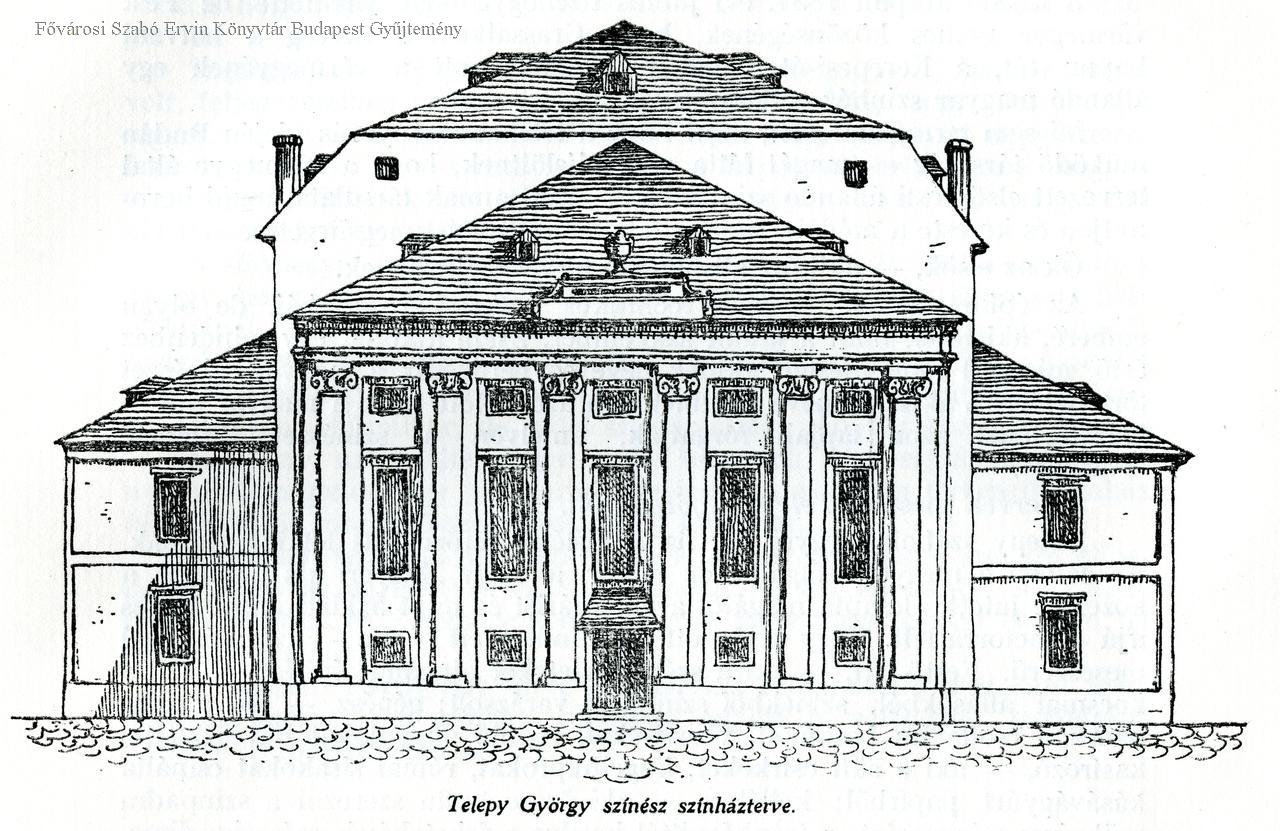
Plan by György Telepy from 1819 (Source: FSZEK Budapest Collection)
The ambassadors of Pest county did the most for the establishment of the theatre, who, upon returning from the 1830 parliament - where the matter of the theatre was on the agenda, but no final decision was reached - convinced the county leadership, and formed a special committee, which they gave a descriptive name, which became "delegation responsible for spreading the local language". This body asked Széchenyi to explain his thoughts. The count thought in terms of a slower process, a kind of cultural joint-stock company system, in which he saw the provision of the conditions for long-term operation. As a place for the theatre, he suggested a building within the city, but of a more modest design. Széchenyi's biggest fear was that the case would die after the great excitement (fortunately, he was wrong).
It is interesting that the creators of the Hungarian Theatre of Pest implemented the exact opposite of what Széchenyi proposed five years earlier. Vice-ispán Gábor Földváry, the chairman of the committee, was against Széchenyi's slower method, which required a nationwide movement, and believed that it would be more expedient to act quickly, even by accepting temporary solutions in the beginning.
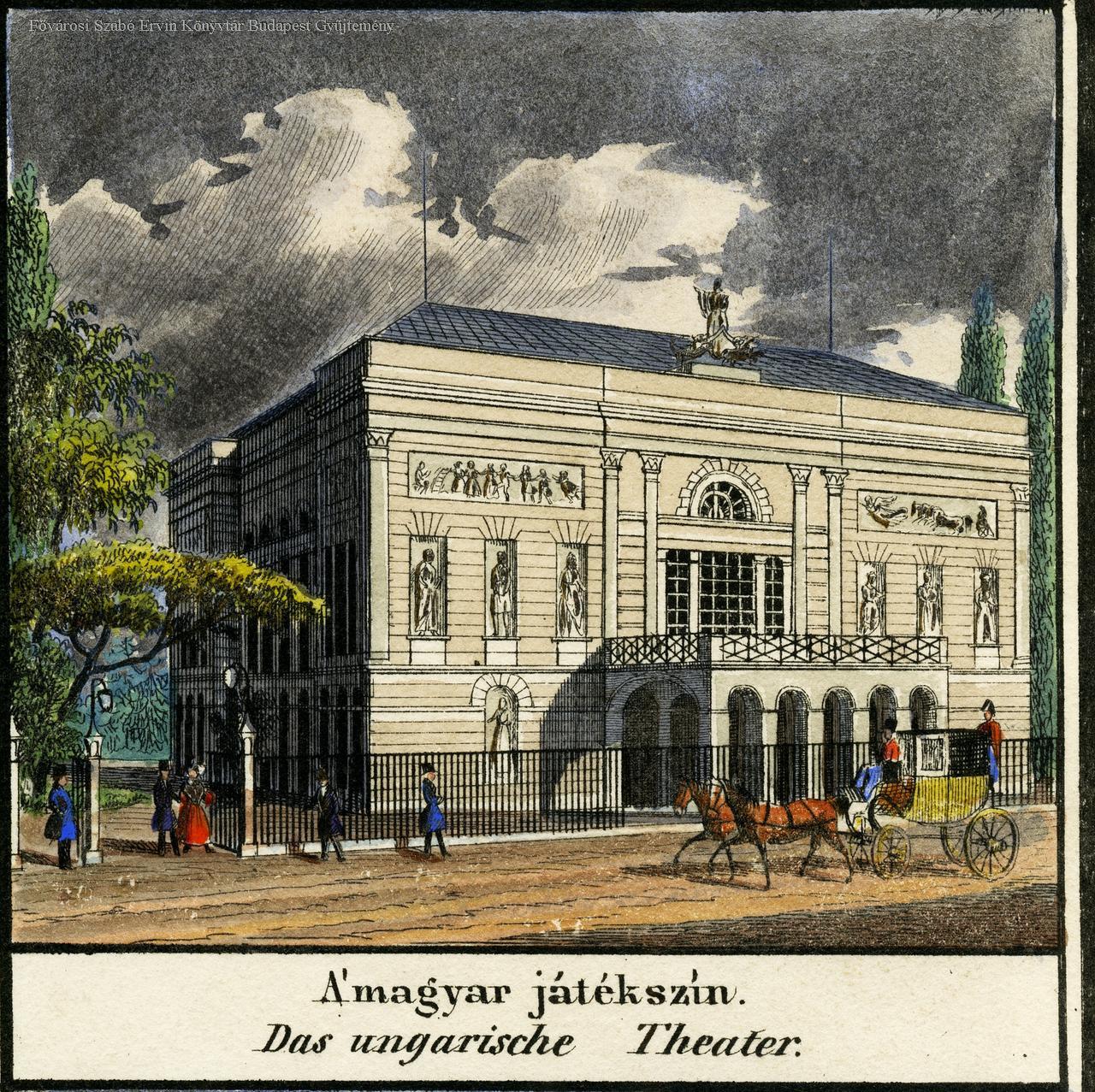
Carl Vasquez's 1837 engraving of the Hungarian Theatre (Source: FSZEK Budapest Collection)
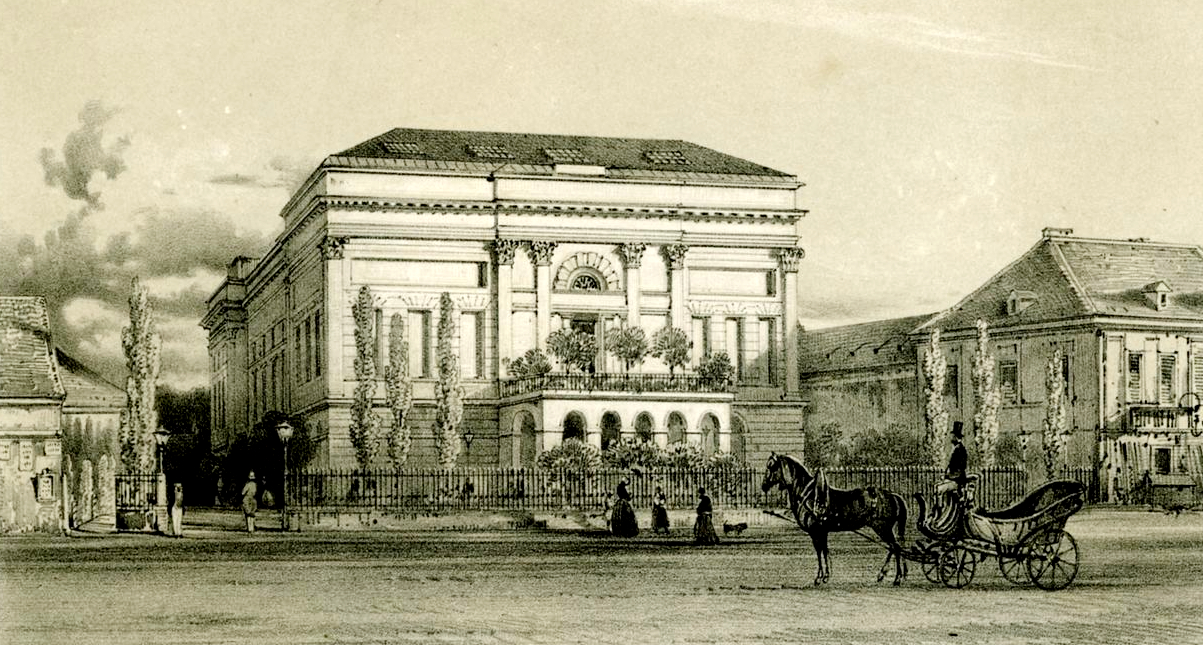
The building bears the name National Theater since 1840, the picture was taken in 1850 (Source: FSZEK Budapest Collection)
In 1833, Duke Antal Grassalkovich donated a plot of land for the construction of the theatre, albeit in the suburbs, outside the Hatvani Gate, which gave a big boost to the cause of Hungarian-language theatre performances, and to the idea of the vice-ispán. According to the plans of György Telepy and Mátyás Zitterbarth, the building was erected on this area in 1835. The theatre building was intended to be temporary from the start, because they expected that in the not-too-distant future they would be able to build a larger, more elegant building. This demand was also enshrined in law, Article 41 of 1836 stated:
"We entrust the National Delegation assigned with the subject of the bridge to be built between Buda and Pest to, in His Imperial Royal Grand Duchy, under the Presidency of the National Palatine, taking into account the circumstances of the Theatre under construction in Pest, to develop a plan for a national ornate theatre with the necessary cost calculations, and call on the patriots to make donations for this purpose through the Legal Authorities and also directly; if they can get enough money for the construction, in His Imperial Royal Grand Duchy, under the Presidency of the National Palatine hereby establishes the national theatre in the City of Pest, on the intended plot, gladly accepts it as national property; and if they could not achieve the hoped-for success, they should give an exhaustive proposal to the next National Assembly on how to implement this national desire in the most targeted way possible."
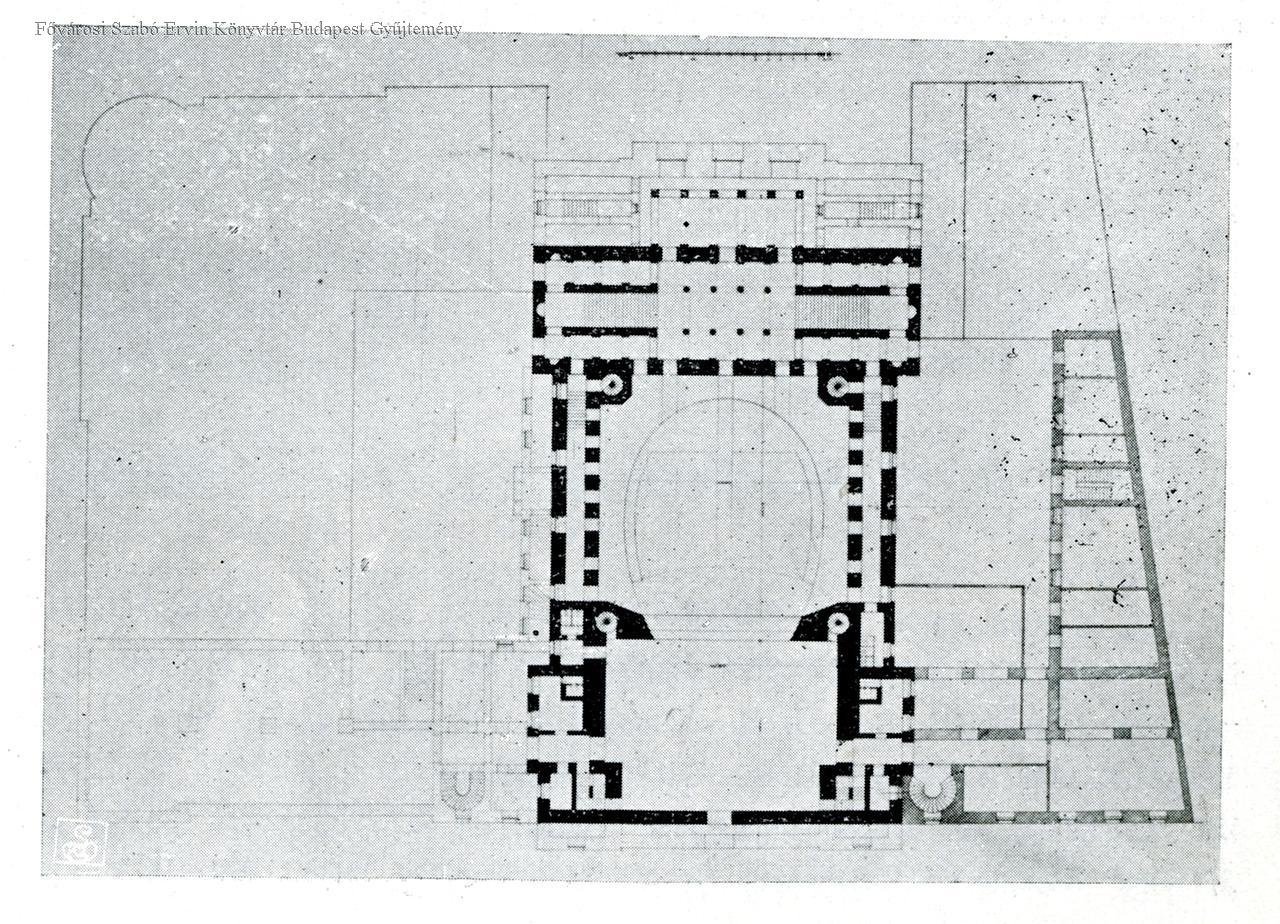
Plan for the later expansion and reconstruction of the theatre (Source: FSZEK Budapest Collection)
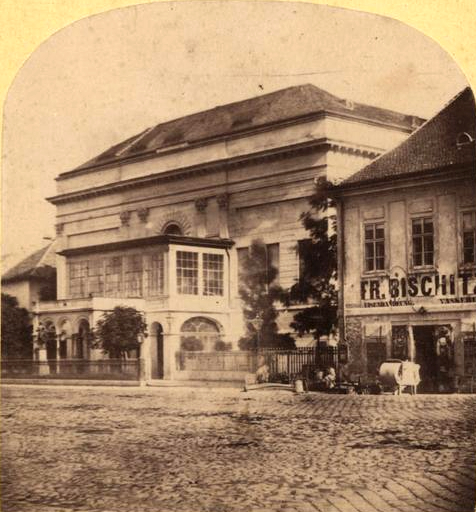
The old National Theatre on Kerepesi Road (now 3 Rákóczi Road) in 1864 (Source: FSZEK Budapest Collection)
In other words, this law was not about the theatre already under construction, but about the building that would soon replace it, which was considered final, but in the meantime, while the above law was accepted by the parlamentarians, on the outskirts of the city, on the plot outside the Hatvani Gate, at the beginning of Kerepesi Road (now 3 Rákóczi Road) the new theatre was built. Vasárnapi Ujság presented the constructed theatre in its 24 June 1855 issue as follows:
"This building consists of a large rectangular hall, the front of which is decorated with a colonnaded porch, the niches on the facade should be decorated with statues, but this is not urgent: from the colonnaded porch we reach the lobby, where the ticket changers' compartments welcome the arrivals. There are ground level entrances next to them on both sides; and the two opposite spacious flights of stairs to get to the boxes and the viewing area on the second floor. [...] Entering the ground floor, people will certainly be surprised by the meticulously edited splendour that adorns the interior of the auditorium. Three rows of boxes go round it, with about 53 boxes, covered with crimson carpets, and richly decorated on the outside with gilded columns and cornices; to the left of the stage is the royal box […]. In the middle of the viewing area, on the ground floor, are the "A-B-C" boxes, so called because they are marked with letters instead of numbers. [...] .The interior of the theater did not always have its current shape; they changed something on it every Easter. At first, everyone could decorate their box according to their own taste, some made it blue, some green, some red; there the far right box was furnished with variegated curtains for a long time; those in it, when they got bored of the performance, drew the curtains and started other entertainment."
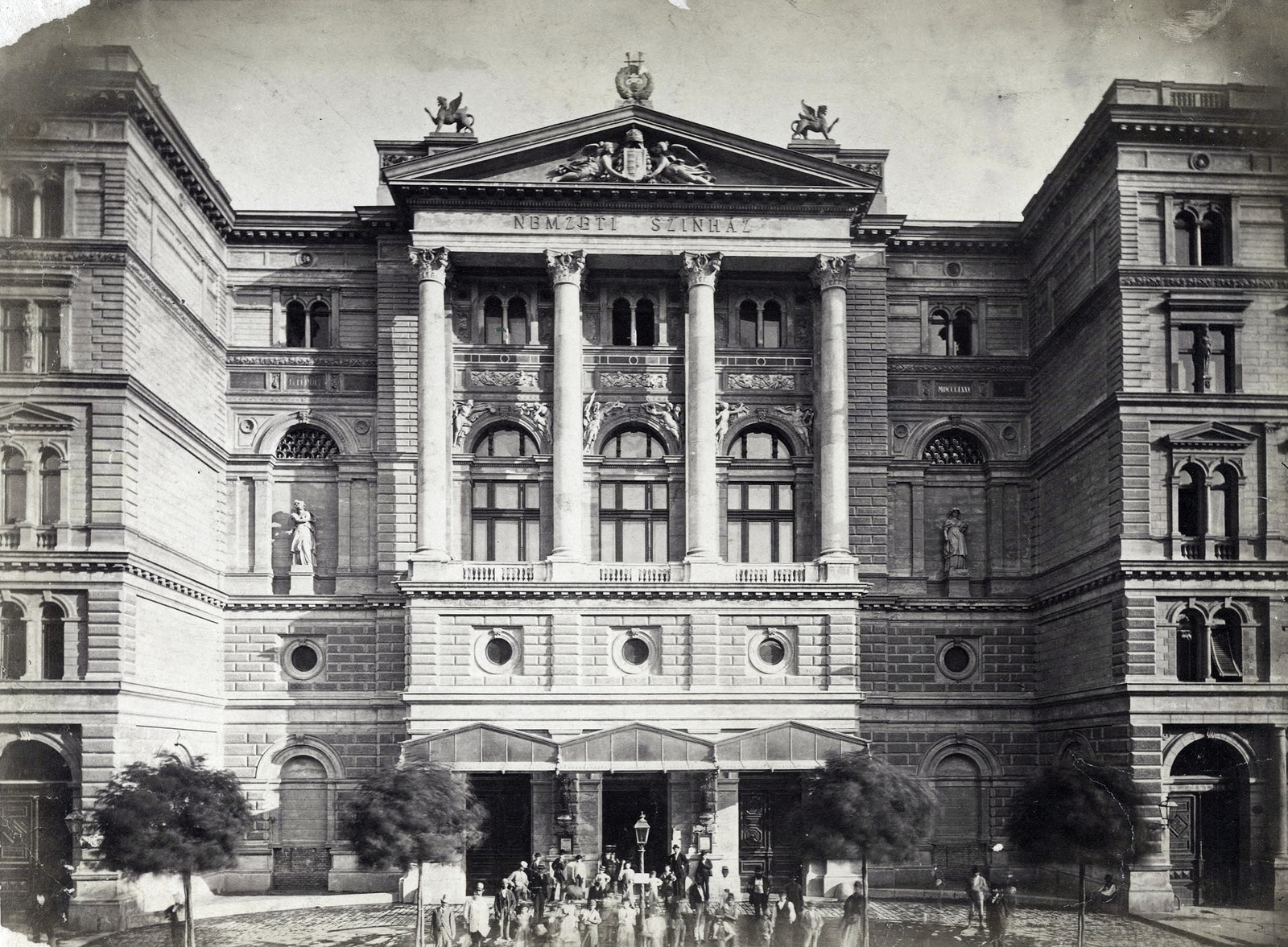
The building of the National Theatre in the 1880s -1890s at 3 Kerepesi Road (Rákóczi Road from 1906) (Photo: Fortepan/Budapest Archives, Reference Nr.: HU.BFL.XV.19.d.1.05.083)
Gas lighting was introduced into the building, which opened on 22 August 1837, shortly after, in 1838, and then, as the third theatre in the world, electric lighting was installed. The institution operated as National Theatre from 1840. The building was expanded between 1875-1876, a floor was added, it received a new facade, and a residential house was built next to it, all according to the plans of Antal Szkalnitzky.
However, fire safety problems continued to arise. The 30 August 1907 issue of the Pesti Napló wrote:
"They also want to start the season at the National Theatre. The capital's theatre inspection committee inspected the theatre and reported to the council that the theatre was "extremely vulnerable to fire". The city council, aware of its great responsibility, refused the theatre the permit to play. It's the third time they had done this, but they are playing at the National Theatre. Two years ago, the director of the theatre appealed the banning order of the council to the minister of the interior, and the minister suspended the banning decision made based on the expert committee's opinion."
The building was not used from the 1908 season, the company temporarily moved to the old Népszínház on Blaha Lujza Square, and the Rákóczi Road building was demolished in 1913. The National Theatre found a real home in the Blaha Lujza Square building, where it could operate until 1964, when it was moved due to the subway construction. This building was demolished by explosion.
Cover photo: The first building of the National Theatre in 1854 (Source: FSZEK Budapest Collection)

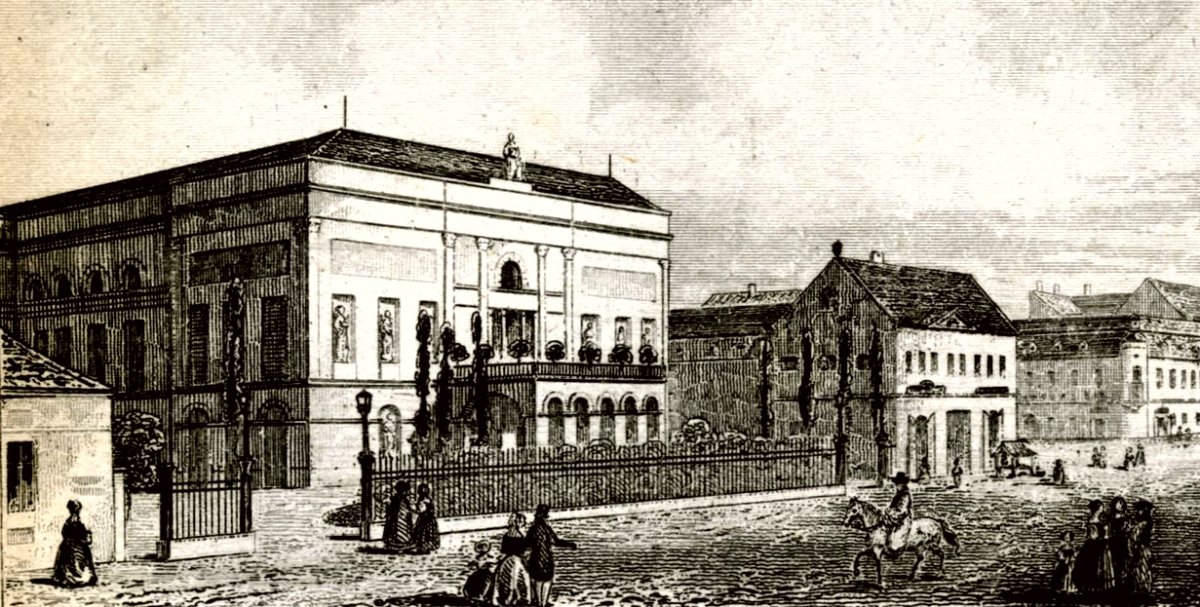


































Hozzászólások
Log in or register to comment!
Login Registration